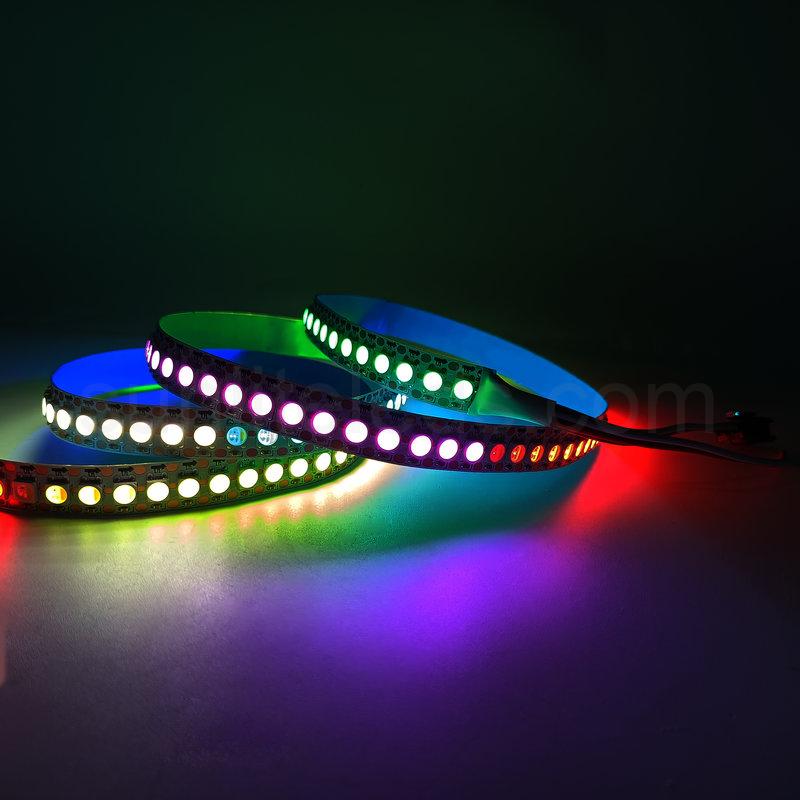Video to display LED strip IP20 VS IP65 VS IP67 VS IP54 VS IP68
When purchasing LED strips, it’s essential to consider their IP (Ingress Protection) ratings, which indicate their resistance to dust and water.
In this article, we will explore the LED strip IP20 VS IP65 VS IP67 VS IP54 VS IP68, their applications, and factors to consider when choosing the right option for your needs.
What does IP Rating mean?
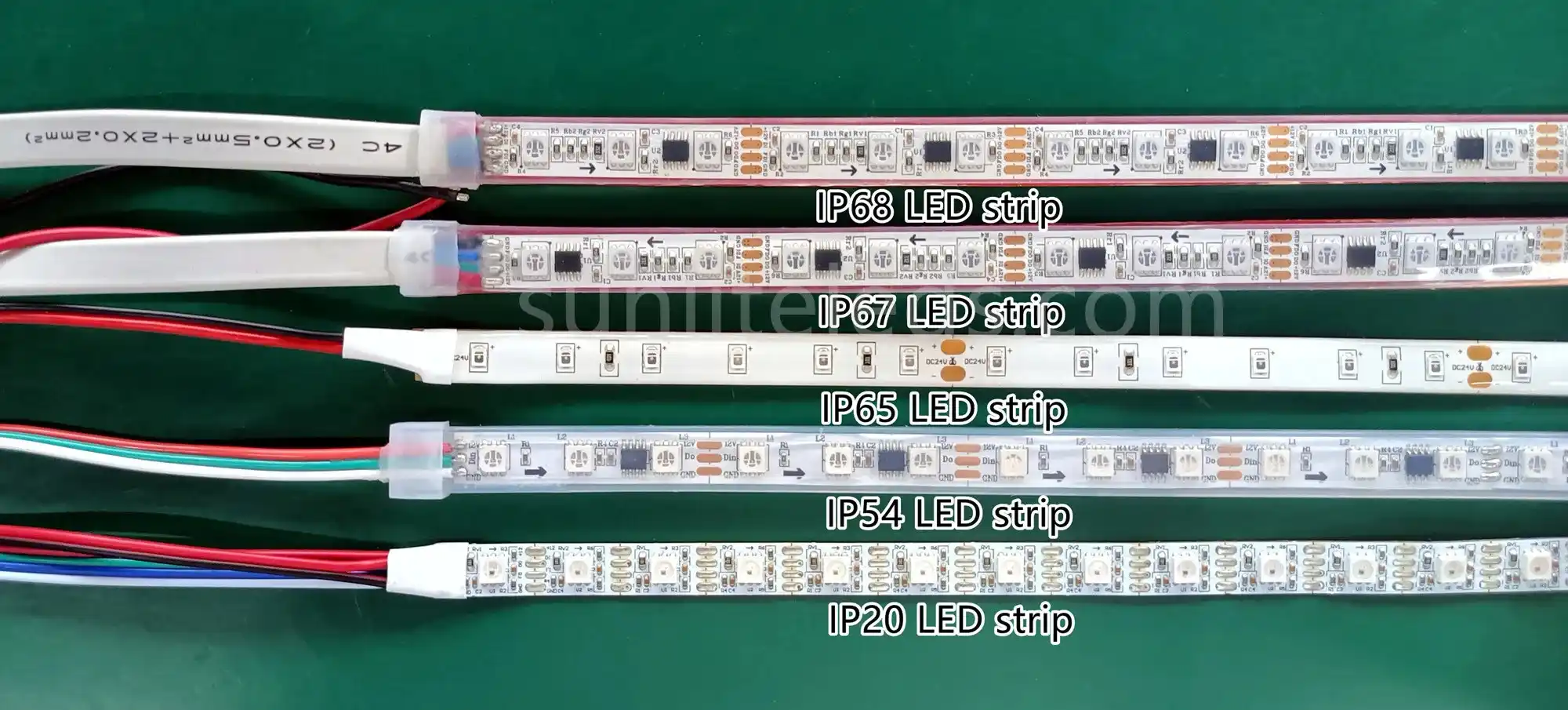
IP ratings, or Ingress Protection ratings, are standards that denote the level of protection an electrical enclosure provides against intrusion from foreign bodies and moisture. The IP rating is typically used to determine the suitability of electronic devices, equipment, and enclosures for various environments and applications.
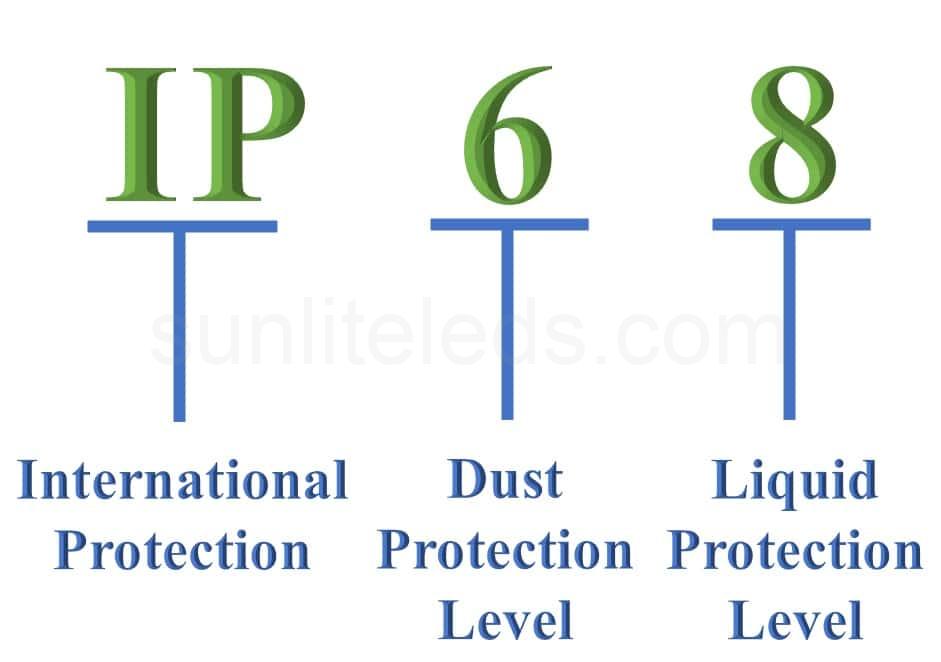
The IP rating consists of two numbers, such as IP65 or IP68, where each number represents a specific level of protection. The first IP digit represents protection against solid objects, ranging from large parts of the body (like hands) to dust. The second digit, on the other hand, represents protection against liquids, from dripping water to complete immersion.
| IP Rating Chart | |||
| First Digist-Solid | Second Digist-Liquid | ||
| 0 | No protection | 0 | No protection |
| 1 | Protection against objects larger than 50 mm in diameter | 1 | Protection against vertically falling drops of water |
| 2 | Protection against objects larger than 12.5 mm in diameter | 2 | Protection against vertically falling drops of water when the enclosure is tilted up to 15 degrees |
| 3 | Protection against objects larger than 2.5 mm in diameter | 3 | Protection against spraying water at an angle up to 60 degrees from vertical |
| 4 | Protection against objects larger than 1 mm in diameter | 4 | Protection against splashing water from any direction |
| 5 | Dust-protected (limited ingress of dust allowed) | 5 | Protection against low-pressure jets of water from any direction |
| 6 | Dust-tight (no ingress of dust allowed) | 6 | Protection against powerful jets of water or heavy seas |
| 7 | Protection against temporary immersion in water. | ||
| 8 | Protection against prolonged immersion in water according to specified conditions. | ||
Understanding what are IP20, IP65, IP67, IP54, and IP68
For LED strip lights, the common IP grades are IP20, IP54, IP65, IP67, and IP68.
IP20 LED Strips
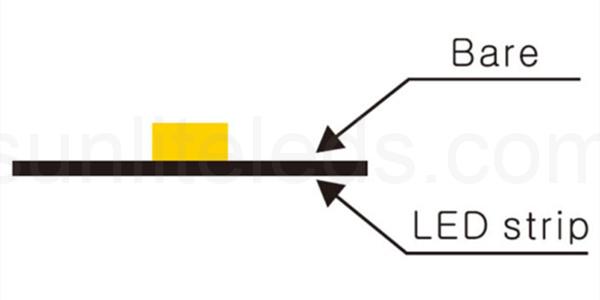

IP20 LED strips are the most basic type and provide no protection against water or dust. They are suitable for indoor use in dry environments where there is no risk of exposure to moisture or dust particles. IP20 LED strips are commonly used for decorative lighting in residential and commercial spaces.
IP54 LED Strip
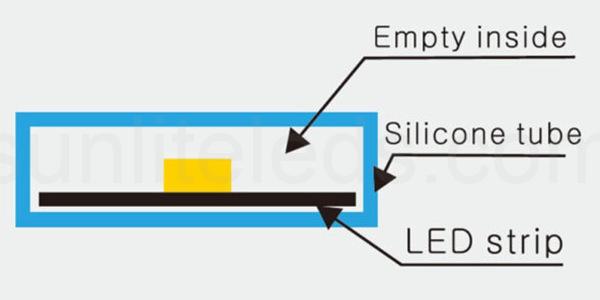

IP54 LED strips offer a moderate level of protection against dust and limited protection against water splashes. They are suitable for use in environments where there is a potential for occasional exposure to moisture. IP54 LED strips are commonly used in kitchens, bathrooms, and other areas where water splashes may occur.
IP65 LED Strips
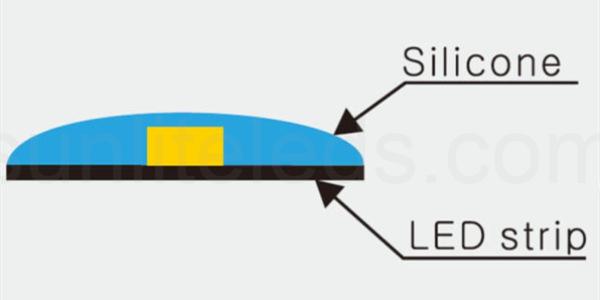

IP65 LED strips offer a moderate level of protection against dust and low-pressure water jets. They are designed to withstand light splashes and are suitable for use in areas with a moderate level of moisture, such as bathrooms or kitchens. IP65 LED strips are often used for accent lighting in both indoor and outdoor applications.
IP67 LED Strips
IP67 LED strips provide a higher level of protection against dust and water immersion. They are completely sealed, making them resistant to temporary immersion in water up to a certain depth. IP67 LED strips are suitable for outdoor applications, including garden lighting, architectural lighting, and signage.
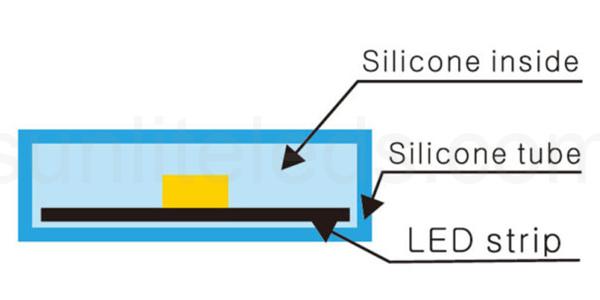
IP68 LED Strip
IP68 LED strips provide the highest level of protection against dust and water. They are fully sealed and can withstand continuous immersion in water beyond a specific depth. IP68 LED strips are ideal for underwater lighting, such as pools, fountains, and aquariums, as well as outdoor applications where they may be exposed to heavy rain or extreme weather conditions.

IP20 vs IP65 vs IP67 vs IP54 vs IP68
Now that we’ve explored each IP rating individually, let’s pit them against each other to see how they stack up.
IP20 vs IP65
The battle between IP20 and IP65 is a clear victory for IP65. It offers superior dust and water protection, making it suitable for a wider range of applications.
IP65 vs IP67
This is a closer fight. Both offer complete dust protection, but IP67 edges out with its superior water protection, capable of temporary submersion.
IP54 vs IP67
IP67 wins again here, offering complete dust protection and higher water resistance compared to IP54’s limited dust and water protection.
IP67 vs IP68
The ultimate showdown: IP67 vs IP68. Both are dustproof, but IP68 takes the crown with its ability to be continuously submerged in water beyond 1 meter.
Applications of Different IP Rating LED strip
LED strips with different IP ratings find applications in various settings:
- IP20 LED strips: Residential lighting, retail displays, and decorative installations.
- IP65 LED strips: Bathrooms, kitchens, outdoor accent lighting, and signage.
- IP67 LED strips: Outdoor lighting, architectural lighting, and commercial signage.
- IP54 LED strips: Kitchens, bathrooms, and areas with occasional exposure to moisture.
- IP68 LED strips: Underwater lighting, pools, fountains, and extreme outdoor environments.
It’s crucial to match the IP rating of LED strip lights with the specific requirements of your project to ensure optimal performance and longevity.
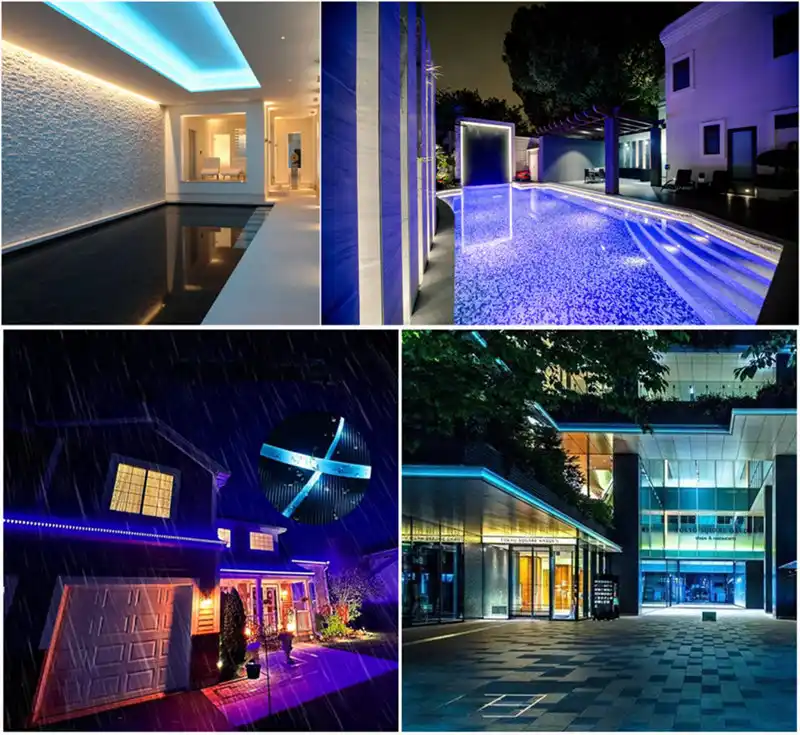
Why Consider IP Rating When Purchasing LED Strip
When purchasing LED strips, it’s important to consider the IP (Ingress Protection) rating to ensure that the strips are suitable for your intended application and environment. Here are a few reasons why you should consider the IP rating when purchasing LED strips:
Protection against dust: The first digit in the IP rating indicates the level of protection against solid objects, including dust. If you plan to use the LED strip in a dusty environment, such as a workshop or construction site, you should choose a strip with a higher IP rating (e.g., IP6X), indicating greater protection against dust particles.
Resistance to moisture: The second digit in the IP rating represents the protection level against moisture. If you intend to install the LED strip in an area where it may come into contact with water or humidity, such as a bathroom or outdoor application, you should select a strip with a higher IP rating (e.g., IPX4 or higher). This ensures that the strip is adequately protected against moisture and can withstand exposure without damage.
Durability and longevity: LED strips with higher IP ratings tend to be more durable and long-lasting. They are designed to withstand harsher environments and are often constructed with materials that offer better protection against dust and moisture. By choosing an LED strip with a suitable IP rating, you can ensure that it will withstand the conditions it will be exposed to, which ultimately extends its lifespan.
Safety considerations: IP-rated LED strips provide an added layer of safety, especially when used in areas with potential electrical hazards or water presence. The higher the IP rating, the better the protection against electrical shock or short circuits caused by moisture ingress.
It’s important to note that the specific IP rating you need will depend on the environment and application requirements. For instance, an IP20 rating might be suitable for indoor use in a clean and dry environment, while an IP65 or higher rating would be more appropriate for outdoor or wet locations.
What to Consider When Choosing IP Grade?
When choosing between different IP-rated LED strips, consider the following factors:
Environment: Determine the level of exposure to moisture, dust, or other harsh conditions in the installation area.
Installation Location: Decide whether the LED strips will be used indoors or outdoors, and consider the specific application requirements.
Durability: Assess the expected lifespan and durability of the LED strips, especially if they are subjected to challenging environmental conditions.
Budget: Consider the cost implications of the different IP ratings and select the option that best fits your budget and requirements.
SunLite is a professional digital LED lights manufacturer in China, and we can customize LED strips to different IP grades according to your needs here are some of our featured products:
Conclusion
Choosing the right IP-rated LED strip is crucial to ensure optimal performance and longevity in different environments. Understanding the LED strip IP20 VS IP65 VS IP67 VS IP54 VS IP68 differences, and IP68 ratings allows you to make an informed decision based on your specific lighting requirements. Consider factors such as the installation location, exposure to moisture or dust, and the desired level of protection to select the most suitable option for your needs.
FAQs
1. How do I know if my LED lights are waterproof?
To determine if your LED lights are waterproof, check their IP rating. Look for an IP65, IP67, or IP68 rating, as these indicate varying levels of water resistance or waterproofing.
2. Can IP54 LED strips be used in a shower area?
No, IP54 LED strips are not suitable for use in shower areas. These strips provide limited protection against water splashes but are not designed to withstand direct exposure to water streams or high humidity environments.
3. Is IP65 better than IP54?
In terms of water resistance, IP65 is superior to IP54. IP65-rated LED strip lights offer better protection against moisture and water splashes compared to IP54-rated lights. However, which one to choose depends on the specific lighting requirements of your project.
4. Can IP54 lights be used in rain?
IP54-rated LED strip lights provide limited protection against water splashes but are not designed for direct exposure to heavy rain. It is recommended to use higher IP-rated lights, such as IP65 or IP67, for outdoor areas with significant rain exposure.
5. Which IP is best for swimming?
For swimming pools or underwater applications, it is recommended to use LED strip lights with an IP68 rating. IP68 ensures full submersion protection and can withstand the conditions typically encountered in swimming pool environments.


